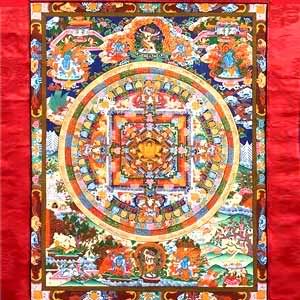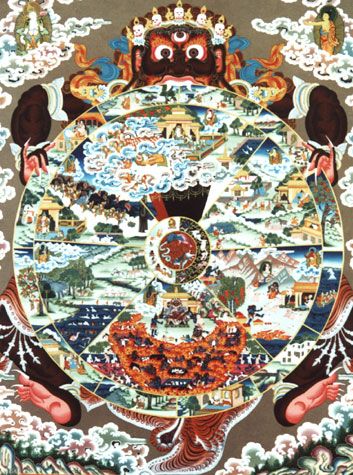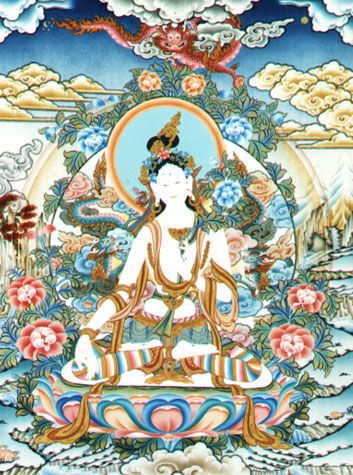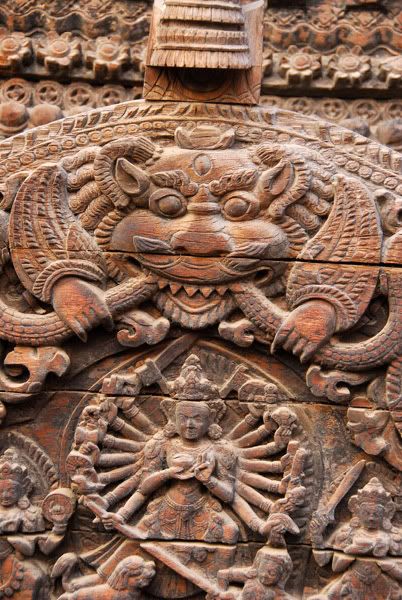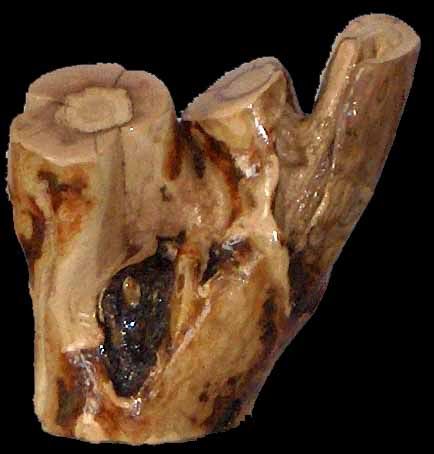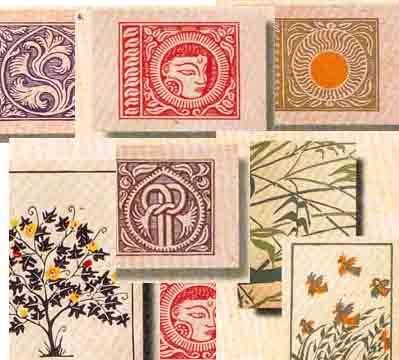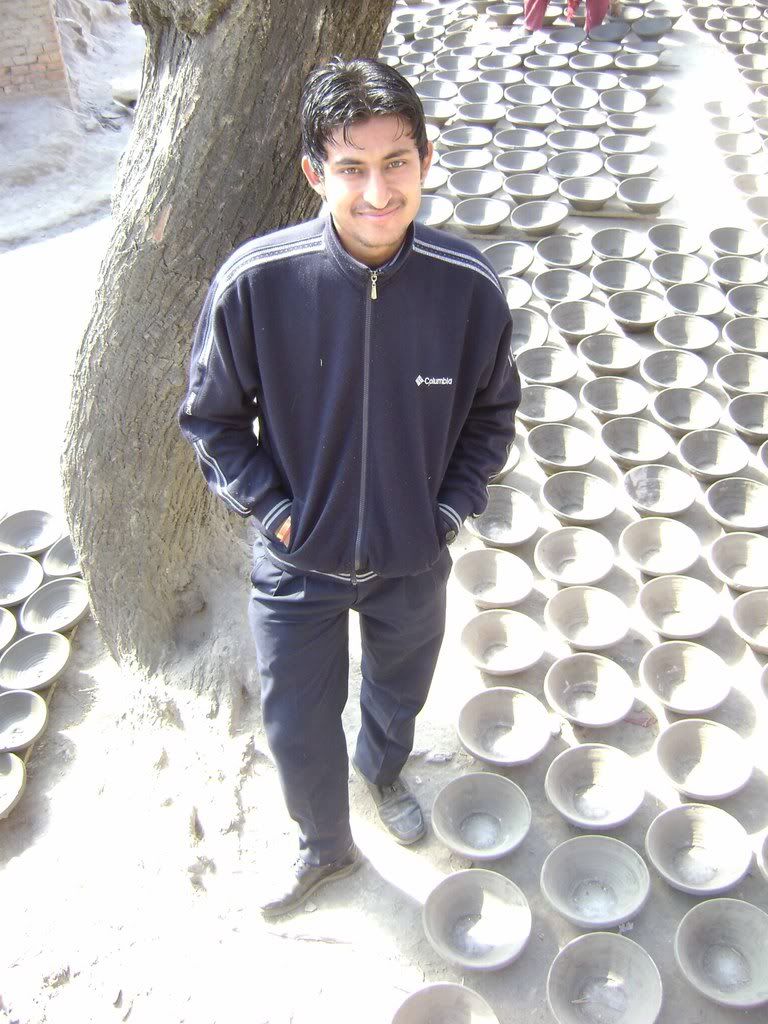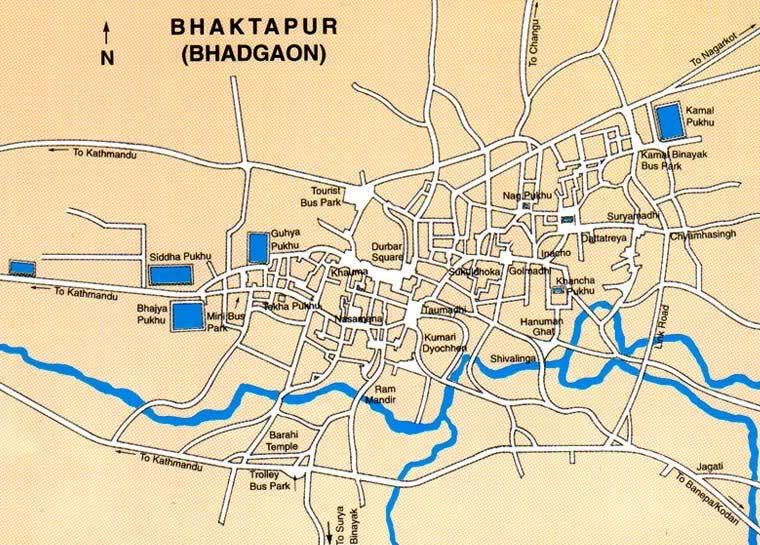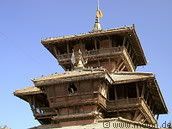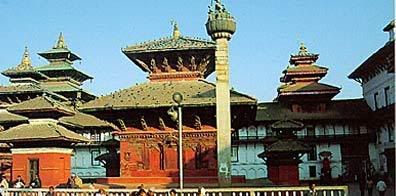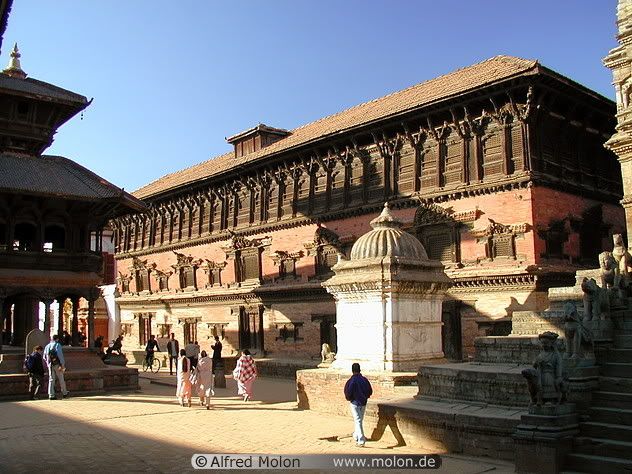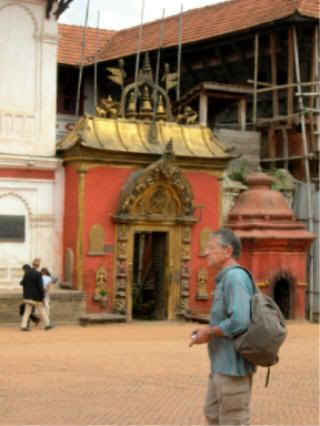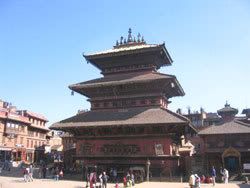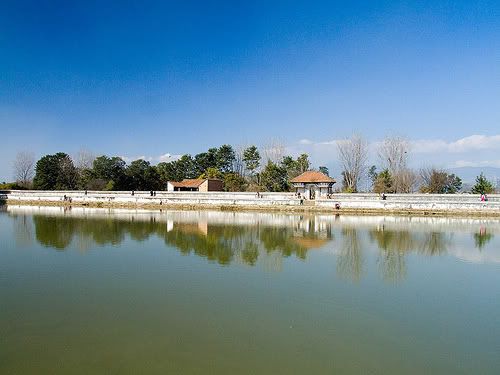Khukuri (kukri) is a gurkha knife, Khukuri (kukri) is used by almost every Nepalese. Every Nepali has at least one khukuri (kukri) in their house. They use khukuri (Kukri) for different purposes like; kitchenware, cutting wood, decorations and safety purpose. Khukuri (kukri) has awesome cutting power. This knife (khukuri) is very popular in Nepal as well as other country through out the world. But the above definition gives only a glimpse of the Khukuri (kukri). Khukuri (kukri) means a lot more than the above definition. Khukuri (kukri) is not just a knife. It has a strong relationship with the Gurkha Soldiers and Nepalese History.
Khukuri (kukri) is not just a knife of Nepal but is also symbol of the Gurkha soldier, with the help of which Gurkha soldiers paved a way to their fame and courage today they have. The excellent cutting power of Khukuri (kukri) was first experienced by the British in India who had to face it in the battles since 1814 while combating the Gorkha army in western Nepal. From that very moment Khukuri (kukri) established its fame and became legend. So the Khukuri (kukri) is also known by the name of Gurkha knife. In the Gurkha soldier's grip, this small piece of curved steel “Gurkha Knife” becomes an incredibly menacing weapon with which he has demonstrated rare feats of bravery while facing the enemy in many a battlefield. This excellent piece of “Gurkha Knife” also Nepali knife has fought many battles in the Nepalese History and has shown very good reputation. Because of that the Khukuri (kukri) is Nepal’s national knife. The blade of Gurkha soldiers “Gurkha Knife” has its own fame and popularity. All the Nepalese people are so proud of this “Gurkha Knife” that this gurkha knife, Khukuri (kukri) is liked by all the Nepalese people.
Khukuri (kukri) is a medium-length curved knife with comfortable weight each Gurkha soldier carries with him in his uniform and in battle. In his grip, this “Gurkha Knife” or the Khukuri (kukri) it is a formidable razor-sharp weapon and a cutting tool. When his rifle misfires, or when his bullets have run out, a Gurkha unsheathes his Khukuri (kukri) and makes his final "do-or-die" run on the enemy in a fury to finish the job. This scene created the romance and the legends. What this legendary knife the Khukuri (kukri) really did, and still does, is a super-clean slaughter: The enemy tumbles down in two clean pieces- and in surprise! because his is the kindest, quietest death because it is the quickest.
Khukuri (kukri) is the national knife of Nepal, originating in ancient times. More than being just a revered and effective weapon, however, the Khukuri (kukri) is also the peaceful all-purpose knife of the hill people of Nepal. It is a versatile working tool and therefore an indispensable possession of almost every household, especially of those belonging to the Gurung, Magar, Rai and Limbu ethnic groups of central and eastern Nepal. Moreover, apart from the fact that the Khukuri symbolizes bravery and valour and is a Nepalese cultural icon, it also represents an exquisite piece of Nepalese craftmanship and is indeed a unique memento for you to take back home from Nepal.
The blade of the Khukuri (kukri) is made up of steel and the handle is made up of wood, buffalo horn and metals. The Khukuri (kukri) is carried in a scabbard (Dab in Nepali) which is a wooden frame covered with leather and has a protective metal cap over the tip. Some scabbard is wrapped with cotton instead of leather. Some scabbards are even decorated with silver. The scabbard has two pockets to hold the two tiny knives tucked behind it. Karda: A small knife, its main purpose is to cut small things and also work as a skinning knife. Chakmak: A sharpener, the main purpose of this Chakmak is to sharp the Khukuri (kukri) and maintain the sharp edge of the Khukuri (kukri). It can be used as a flint maker also. The Notch (Kaura) in the blade near the hilt of most Khukuri (kukri) serve as a conduit for the blood on the blade to drip out thus prevents it from soiling the hilt, as well as a device for catching and neutralizing an enemy blade. It also represents the Hindu fertility symbol. The Khukuri (kukri) is not only the national knife but also has great religious importance and is worshipped by the Nepalese during the grand Hindu festival Dashain.
The oldest khukuri (kukri) known to exist is the one on display at the National Museum in Kathmandu which belonged to Drabya Shah, the King of Gorkha in 1627. It is, however, certain that the origins of the knife stretch further back. The machira, the cavalry sword of the ancient Macedonians which was carried by Alexander's soldiers when it invaded north-west India in the 4th century BC, closely resembled the khukuri (kukri). The origin of the khukuri (kukri) has also been linked to the development of a form of blade similar to the classic Greek sword or kopis. Others suggest that it originated from a form of knife first used by the Mallas who came to power in Nepal in the 13th century. Still others find similarities in the construction of some Khukuris (kukri) to techniques of sword making found in Japan. The weapon may, however have been developed in isolation Nepalese peasants. Whatever be the roots, Nepal, the Gurkhas and the Khukuri (kukri) are inseperable in reputation.
The fact that khukuri (kukri) is the national knife of Nepal. HimalayanMart try to expose the art and tradation of khukuri to the out side world. The making of a single khukuri (kukri) four men fully occupied for an entire day, sometimes even more. The raw materials for making khukuri (kukuri) -steel, brass, Rose wood, buffalo hide and horn - are first carefully selected. Only the best are utilized. Then only the actual process of making the Khukuri starts. Beating and shaping the steel to exact specifications -both measurements and weight -tempering, polishing and sharpening it, shaping the sheath and encasing it with leather, carving the handle and finally putting everything together are both time and energy consuming.
Everything is done by hand and the only machine used is a lathe for shining the khukuri. What makes HimalayanMart khukuri (kukri) so special !! The same thing which make the knife so revered; four men working a full day to craft each blade; high grade carbon steel; authenticity rather than decoration. These are the real things, not fancified souvenirs peddled by hawkers on the streets. They are honest, powerful and graceful blades, which have the pride of legendary Gurkhas for nearly 200 years and the pride of their owners since times immemorial.Considering the amount of time and effort invested in the making of each khukuri (kukuri), the prices of the khukuries are surprisingly reasonable - They are, therefore, absolute bargains.
We have wide varities and collection of khukuri (kukri) ranges start from small khukuri (kukri)replica called the "Paper knife" to Buff head Sacriifial ones. All khukuris are made of Hi-Carbon Steel using fine raw materials and are crafted by skilled craftsmen known as the "Bishwakarmas(born khukuri makers)". Accoding to khukuri style and nature we have categorized on differenet heading: Army Khukuri, Decorative Khukuri, Dragon Khukuri, Kothimora Khukuri, Miniature Khukuri, Special Khukuri, Village Khukuri, Sacrificial Khukuri etc.
We also have wholesale option if you want these khukuries in bulk (Khukuri online store). Please refer our "Wholesale Buyers" or “Order By Demand” section for detail or call us at 977-1-5547819 or Fax us at 977-1-5545657 or mail us at info@himalayanmart.com
FEW TIPS FOR MAINTAINING KHUKURI
How To Maintain your Khukuri (kukri) ?
* Apply machine/gun oil on the blade of a khukuri (kukri) at least once a month and every time after use. Make sure not to leave any fingerprint on the blade of a khukuri.
* Incase rust develops on the blade of a khukuri (kukri), rub it off with fine sandpaper, clean the dirt using some petrol, wipe it off with a clean cloth and apply oil.
* Use shoe polish for the leather case, brasso for the brass fittings and silvo for silver cases.
* Both sides of the blunt chakmak can sharpen the blade. However, a sharpening stone is recommended
How to unsheathe your Khukuri (kukri) ?
Do not encircle the scabbard with your fingers while drawing out your Khukuri (kukri). This may cause injury. Hold the upper edge of the scabbard with your palm and fingers and then draw the weapon out slowly. In case the Khukuri (kukri) becomes loose when placed in the scabbard (as the leather may open up a bit with use), push the Khukuri (kukri) forward after tucking in the sheath and pull it back a little when unsheathing it
Caution :
* Care should e taken not to expose the khukuri (kukri) scabbard to the sun for a long period of time as heating may help it to shrink a bit and hence making the blade difficult to insert.
* Using the blade of a khukuri on metllic surface and stone etc. should also be avoid.
ARMY KHUKURI (KUKRI)
Ceremonial Khukuri (Kukri)
The Gurkhas carry this Khukuri (kukri) on special occasions like; ceremonial Khukuri (kukri) drill presented before high ranking military officers or VVIP dignitaries. The Gurkha withdraws the khukuri from the scabbard and display out for inspection with their rifle between their knees as a mark of respect to the officers and dignitaries. During the presentation they withdraw the khukuri from scabbard and hold it out for guest inspection. This action is a form of felicitation of the officers and the guests. The blade is also skillfully crafted and recruitment date of each soldier is engraved. A soldier retains this khukuri throughout their army career and is a prize possession after retirement. This standard sized knife is made from highly polished high graded carbon steel and the scabbard is made of best quality patent leather.
Jungle Khukuri (kukri)
This is standard full-sized unpolished khukuri (kukri) used for tactical jungle warfare. This is the training knife for Gurkha soldier. This knife has 10.5” long blade and measure 15” long with handle. The khukuri weights 600 gms and comes with buffalo horn handle and leather case. This is totally unpolished full-sized Khukuri used for jungle warfare. It is training knife for the Gurkha soldier.
Nepal Army Khukuri (kukri)
This khukuri (kukri) is traditionally carried either in war or in civil life. This khukuri (kukri) is issued to Royal Nepal Army (Gurkha Army) and Police Armed force. This khukuri blade is made using highly graded carbon steel with 4” long buffalo horn handle or rosewood and leather case. This knife weights 500 gms. This khukuri is the simplest one which is used in warefare by soldiers and has no other important uses expect in warfare. This is one of the simplest khukuri made in Dharan in Eastern Nepal.
Nepal Police Khukuri (kukri)
Khukuri (kukri) being the national knife of Nepal, it is issued to all Nepalese Forces including the Nepal Police. The security force has a special type of khukuri (kukri) slightly different than the army version. The blade is heavier, more curved and rosewood handle is preferred instead of horn like on the army ones. A Khukuri (kukri) insignia is also fitted at the end cap of the handle to represent Nepal Police. The knife is retained throughout police career and regularly inspected by senior officers. It is the prize collection and reminder of their loyal service to the country after retirement. It is a famous knife because of its close association with the force.
Service No. 1 Khukuri (kukri)
This is the most common and popular khukuri (kukri) amongst the Gurkha soldiers, This khukuri (kukri) is issued to all British gurkha soildiers during enlistment and is retained by them through their arm career. This khukuri (kukri) is used during parade and combat and is regularly inspected by an officer. This khukuri (kukri) measures 15” with the handle and which has a 10.5” long blade. The handle is made of buffalo horn and the sheath of buffalo leather and weighs 700gms.
TOP
World War Khukuri (kukri)
This khukuri (kukri) was originated in Nepal and was later imitated by Indian Gurkha army in Dehradoon during World War II. It was so exclusively used in the war that Nepal could not meet the ever increasing demand hence Dehradoon took over and started producing it in a large scale. This is how it got name “Dehradoone Khukuri”. The sight of this formidable Khukuri (kukri) in the hands of the Gurkha soldiers was enough to bring the enemy at their wit’s ends. The blade is made from reinforced steel used in railway tracks. The handle is usually made of rosewood or horn and the sheath is made of buffalo hind. This khukuri (kukri) weights 800 grams and its blade measures 12” long and has a 5” long handle.
TOP
DECORATIVE KHUKURI (KUKRI)
Chainpure Special Alminium Khukuri (kukri)
This khukuri (kukri) comes from the small village in Eastern Nepal called Chainpur. Its close notch, not found in other knives, signifies its origin. This khukuri has beautifully carved plain Indian rose wood scabbard which is embellished with bras binding. The scabbard made of Indian rosewood symbolizes the craftsmanship of the people of Chianpur. It has a beautiful blade and a unique handle can be made of aluminum. This khukuri (kukri) is not used in warfare’s but is used as domestic weapon by Gurkhas has 10” long highly graded carbon steel blade with 5” Long handle and weighs 600 gms.
Chainpure Wooden Special Khukuri (kukri)
Chainpur, a small village in Eastern Nepal, is the originating place of this Khukuri (kukri). Its close notch, not found in other knives, signifies its origin. It has a beautiful blade and a unique handle can be made of Indian rosewood. The scabbard made of Indian rosewood symbolizes the craftsmanship of the people of Chainpur. It is either plain or beautifully carved or embellished with brass binding which makes it stand apart from other knives. It is not used in war fares but is used as decoration piece or as a domestic weapon by Gurkhas. The length of the blade is 10" with a 5" long handle and weighs 600 grams.
Dhankute Wooden Khukuri (kukri)
Dhankuta is a village located in Eastern part of Nepal and this type of Khukuri (kukri) is made only in this village. Hence it is called "Dhankute Khukuri". Only the skilled craftsmen of this village can make this kind of khukuri. The skilled craftsmen of Dhankuta craft these kinds of Khukuris with rose wood scabbards depicting some national symbols such as King's Crown "Shreepech", National Bird "Danphe", Gurkha insignia "Crossed Khukuris" and the National Fish "Aasla". The handle is also made of rose wood. The scabbard size depends on the size of the horn available. The size of this khukuri (kukri) is 14” long with handle and weighs 600 gms.
TOP
DRAGON KHUKURI (KUKRI)
Bhojpure Dragon Khukuri (kukri)
Bhojpur in East Nepal, from which comes the name of this particular knife, is famous for its Khukuris. This Khukuri (kukri) is slightly bigger and heavier than the standard blade and is not a military issue. The blade is beautifully engraved with dragon. The blade is 11" long and measures 15.5" with handle made up of wood or horn. The Bhojpure Khukuri is a must for most Nepalese to keep it at home. It weighs 600 grams and has a buffalo leather case.
Brass Angkhola Dragon Khukuri (kukri)
This khukuri (kukri) is made in Ankhola village in eastern Nepal. It is similar to the Bhojpure Khukuri, however unlike the Bhojpuri, it is forged in a different manner and is perhaps one of the most difficult to craft. The blade is beautifully engraved with dragon. This khukuri (kukri) has 10.5” long height graded carbon steel blade and 5” long handle made of rose wood and measures 15.5 long. This khukuri (kukri) has a brass handle and weighs 800gms with buffalo leather case.
Kothimora Dragon Khukuri (Kukri)
This khukuri (kukri) is specially made for the retiring British or Gurkha army officers. This khukuri (kukri) whose blade is made of highly graded carbon steel and whose scabbard is highly ornamented using pure silver filigree having a velvet background is presented to the retiring British or Gurkha army officers as a souvenir from his regiment. The cap badge of the regiment is mounted on the scabbard. The blade is beautifully engraved with dragon. The size of the khukuri is 15” long with handle and weighs 750 grams.
Long 18 Dragon Khukuri (Khukri)
This khukuri (kukri) is the second largest knife used for sacrificial ceremonies especially for goats. During the Nepali festival; Dashai, which falls mainly in the month of October, a large number of goats are sacrificed to celebrate the event on a special day called "Mar" (Sacrifice). It is customary for families to purchase a goat locally and sacrifice after the necessary ceremonies are done. This khukuri normal length of the blade is 18" and with handle it is approx. 25" long. On special order the scabbard can be made of wood with Brass or Aluminium handle. The normal knife has a wooden handle with leather (buffalo hide) scabbard. It weighs approx. 1500-2000 grams.
TOP
KOTHIMORA KHUKURI (KUKRI)
Kothimora Special Khukuri
This khukuri (kukri) is specially made for the retiring British or Gurkha army officers. This khukuri (kukri) whose blade is made of highly graded carbon steel and whose scabbard is highly ornamented using pure silver filigree having a velvet background is presented to the retiring British or Gurkha army officers as a souvenir from his regiment. The cap badge of the regiment is mounted on the scabbard. It is a customary to present the outgoing officers with a kothimora as a memento from his regiment to honor him for his loyal and long service. The case is exclusively designed using pure silver filigree with top quality velvet background matching the color of the regiment. The regimental cap badge is also mounted along with a replica of a Gurkha and Khukuri Cross insignia. A silver chain is wrapped around and a shield is located at the front portion as a part of decoration. The high quality blade is slightly longer and heavier than the service type.
Kothimora khukuri (kukri)
This khukuri (kukri) is specially made for the retiring British or Gurkha army officers. This knife whose blade is made of highly graded carbon steel and whose scabbard is highly ornamented using pure silver filigree having a velvet background is presented to the retiring British or Gurkha army officers as a souvenir from his regiment. The cap badge of the regiment is mounted on the scabbard. It is a customary to present the outgoing officers with a kothimora as a memento from his regiment to honor him for his loyal and long service. The case is exclusively designed using pure silver filigree with top quality velvet background matching the color of the regiment. The regimental cap badge is also mounted along with a replica of a Gurkha and Khukuri Cross insignia. A silver chain is wrapped around and a shield is located at the front portion as a part of decoration. The high quality blade is slightly longer and heavier than the service type.
TOP
MINIATURE KHUKURI (KUKRI)
6” Khukuri khukuri (Kukri)
It is a smallest version of khukuri (kukri) (including sharpener and small knife at the back). Though it is not considered as that dangerous weapon bit it is effective as bigger one for doing small work it is also perfect item for tourist to take back home as a gift or as a souvenir from Nepal. . It is very light yet very effective and importantly very easy to transport. It is also the replica of original Nepali Bhojpure khukuri. Because of its cute size it is famous among teens and to give as gifts. It is a good domestic utility tool and highly recommended for camping and trekking because of its easiness to carry around
Biltong Khukuri (Kukri)
This khukuri (kukri) name is named after very popular South African Knife Biltong. Biltong means “Dry Meat” for the South Africans and this knife is for cutting meat. This khukuri is also called pocket knife as it has the perfect size, and combination of steel and sharp edge t fit in inside pocket. This is the smallest blade khukuri can be used exceptionally well as a fruit knife. The length of the blade is 5" long and with the handle is 7" long. The weight is 700 grams and buffalo hide is used for the scabbard while the handle is made of wood.
Khurmi
The shape of this khukuri (kukri) is totally different from actual khukuri. This khurmi is specially used by Nepalese village women for cutting grass in rice field etc. A typical sickle shaped grass cutter called “Hansiya” influences this shape however; Khurmi is given better size and finishing. Since its origin women have been using it for their daily household work and also to safe guard themselves from predators while in woods. Likewise since ancient time rural women have been wearing (using) decorative khurmi (horn/wood scabbard) during cultural ceremonies and festivals. There is no standard size of this knife. The weight varies according to their size. A normal Khurmi weighs 350 grams and has 8" long blade. Khurmis having horn or wooden case have national symbols displayed on it.
Mini Jungle Khukuri (kukri)
This knife is neither too heavy nor too light so it is quite convenient for small household task. This has been named so due to its size. It is very useful in jungle warfare and is on high demand by trekkers and hikers as its handy size makes it easier to carry around and performed jungle tactics effortlessly. It is also used for domestic use and for gardening purpose. It is not a military demand however some recruits prefer it because of its easy size. Some mini jungles are also engraved with dragons using traditional tools for display. The 8" long blade is made of highly graded carbon steel and has a 4" long Indian rosewood handle.
Paper Knife
These are replicas of the original blade and work wonderfully for opening letters or cutting papers as named to this smallest version of the khukuri. They also make neat gifts.The length of the blade is 4" and measures 7" along with the handle. The handle is made of either wood or buffalo horn while the sheath is made of buffalo leather. It weighs 50 grams.
TOP
SPECIAL KHUKURI (KUKRI)
Balance Khukuri
This khukuri (kukri) is beautifully shaped knife and is one of the most difficult one to crafts as it should be made in such a way that the balance of the blade and the handle must be precisely equal. There is saying that if you throw this knife, it will hit the right target. The length is blade is 9” and with the handle is measures 13” long. This khukuri has scabbard made of buffalo hide and weighs 450 grams.
Chitlange Khukuri (Kukri)
This is the newer and nicer version of the Chainpure. The shape of the knife is made similar to that of Chainpure, however with a better touch. The forging of the blade from the tip all the way down to the notch makes the khukuri very special as this is the hardest part of crafting for the skilled craftsman costing more effort and time. The horn or wooden handle is nicely made for much easier grip .The buffalo leather case is given the newer and nicer touch too. The blade is about 13” long and handle is 5". It is made in Chitlang in east Nepal. It weighs around 900 grams.
Ganjawal Khukuri (Kukri)
The blade of this khukuri (kukri) is same as Bhojpure khukuri. The scabbard is made from refined buffalo leather with beautiful design on it. This khukuri not only comes with sharpener and small knife at the back but also with tweezers, ear-picker, chisel, tooth pick and a pouch to keep dust for flint maker. There is always one extra empty hole also to keep pencil, pen, etc.
TOP
VILLAGE KHUKURI KUKRI
Bhojpure khukuri (kukri)
Bhojpur lies in eastern part of Nepal, from which comes the name of this particular khukuri (kukri). The blacksmith of this town became so expert in making khukuri is that in short span of time they made this products famous all over Nepal. It is purely handmade carving done by very skilled craftsmen using only basic domestic tools. This khukuri is slightly bigger and heavier than the standard blade and is not a military issue. The blade is 11" long and measures 15.5" with the handle made of wood or horn .The bhojpure khukuri is a must for most Nepalese to keep it at home. It weights 650 grams and has a buffalo leather case.
Chainpure Khukuri (kukri)
This khukuri (kukri) comes from the small village in Eastern Nepal called Chainpur and its purpose is for decoration. This khukuri (kukri) has closed notch, not found in other knives, signifies its origin. This khukuri has beautifully carved plain Indian rose wood scabbard which is embellished with brass binding. Buffalo leather is used to make the scabbard. The blade is made slimmer and lighter than the army types. A hole in the blade is the trademark of Chainpur village and also symbolizes a footmark of a cow that is believed holy in Nepal. This khukuri is not used in warfare’s but is used as domestic weapon by Gurkhas. The length of the blade is 10" with 5" long handle and weighs 600 grams.
Panawal Dotted Khukuri (Kukri)
This khukuri (kukri) is identical in measurement and weight to the Angkhola The blade measures 11" and the total length with wooden handle is 15". This Khukuri (kukri) however, has a uniquely distinct handle where the metal of the blade in the handle area is flat and not narrow and pointed as in other knives. The blade is therefore visible all around the handle. The handle is joined strongly to the blade with two metal rivets which can also be seen at the sides. This Khukuri (kukri) is of heavy type and weighs 1 kg. It is made in Dharan (East Nepal).
Sirupate Khukuri (Kukri)
This is another popular khukuri (kukri) used by the Gurkhas in the jungle. The knife derives its name from "Siru" which is a slender and narrow type of a leaf. The Blade is designed in the shape of the leaf. The blade is 10.5" long and measures 15" with the handle. It has a wooden handle and the sheath is made of buffalo leather. It weights 500 Grams.
TOP
SACRIFICAL KHUKURI (KUKRI)
Buff Head Khukuri (Kukri)
This khukuri (kukri) is the largest knife made in Nepal. The khukuri (kukri) has a staggering weight of 5 kgs and the blade is remarkably long and measures 40” and 13 “ long handle made of rosewood, while the scabbard is that of buffalo leather. This khukuri is specially used by the skilled person during the sacrificial ceremonies to chop the head of water buffalo hence known as "Buff Head". He has to do it in one blow otherwise the year will bring bad omen for Nepalese. It weighs a staggering 5 kilos.
Long 18 Brass Khukuri (Kukri)
This Khururi (kukri) is the second largest knife used for sacrificial ceremonies especially for goats. During the Nepali festival; Dashai, which falls mainly in the month of October, a large number of goats are sacrificed to celebrate the event on a special day called "Mar" (Sacrifice). It is customary for families to purchase a goat locally and sacrifice after the necessary ceremonies are done. The normal length of the blade is 18" and with handle it is approx. 25" long. On special order the scabbard can be made of wood with Brass or Aluminium handle. The normal knife has a wooden handle with leather (buffalo hide) scabbard. It weighs approx. 1500-2000 grams
